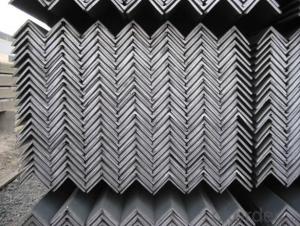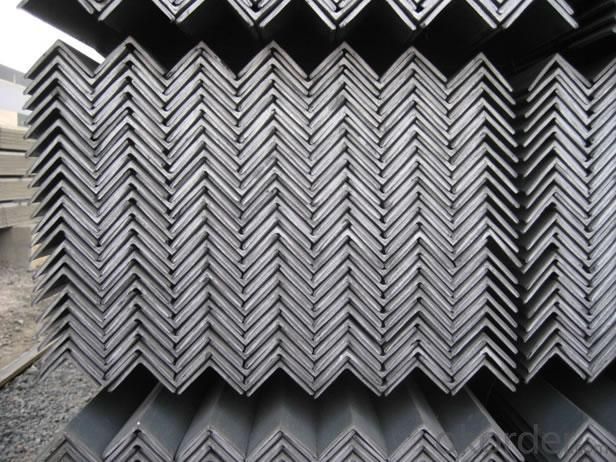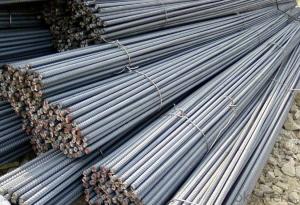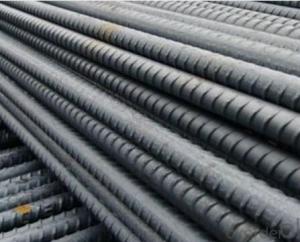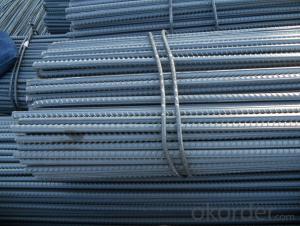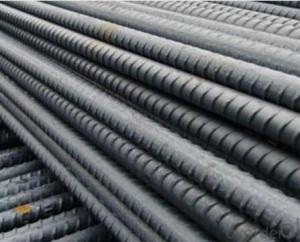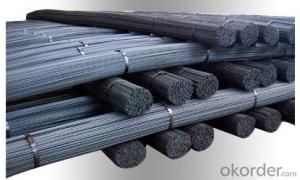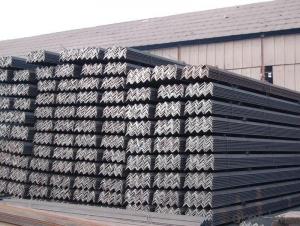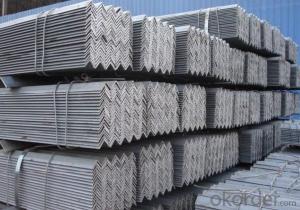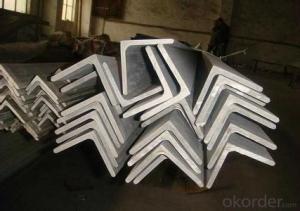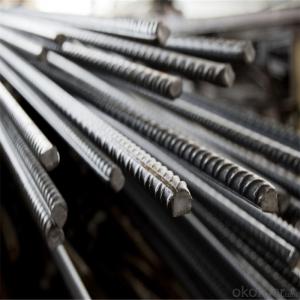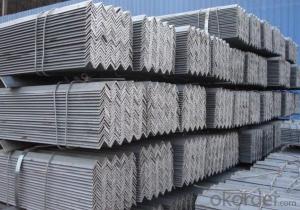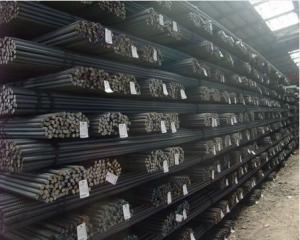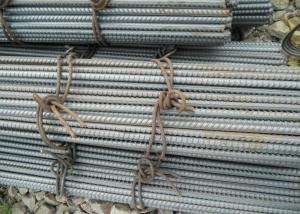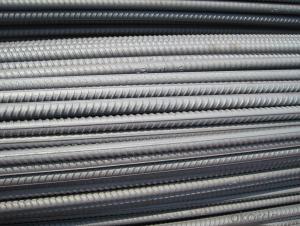ANGLE STEEL 30-250MM
- Loading Port:
- China Main Port
- Payment Terms:
- TT OR LC
- Min Order Qty:
- -
- Supply Capability:
- -
OKorder Service Pledge
OKorder Financial Service
You Might Also Like
Angle Steel Details:
| Minimum Order Quantity: | 25mtons | Unit: | m.t. | Loading Port: | China Main Port |
| Supply Ability: | 80000-100000MTS/YEAR | Payment Terms: | TT or LC |
Product Description:
Specifications of Angle Steel
1. Invoicing on theoretical weight or actual weight as customer request
2. Length: 6m, 9m, 12m as following table
3. Sizes
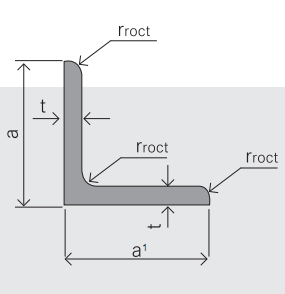
Sizes: 25mm-250mm | ||
a*t | ||
25*2.5-4.0 | 70*6.0-9.0 | 130*9.0-15 |
30*2.5-6.6 | 75*6.0-9.0 | 140*10-14 |
36*3.0-5.0 | 80*5.0-10 | 150*10-20 |
38*2.3-6.0 | 90*7.0-10 | 160*10-16 |
40*3.0-5.0 | 100*6.0-12 | 175*12-15 |
45*4.0-6.0 | 110*8.0-10 | 180*12-18 |
50*4.0-6.0 | 120*6.0-15 | 200*14-25 |
60*4.0-8.0 | 125*8.0-14 | 250*25 |
5. Payment terms:
1).100% irrevocable L/C at sight.
2).30% T/T prepaid and the balance against the copy of B/L.
3).30% T/T prepaid and the balance against L/C
6.Material details:
Alloy No | Grade | Element (%) | | ||||
C | Mn | S | P | Si | | ||
| | |||||||
|
|
|
|
|
|
| |
Q235 | B | 0.12—0.20 | 0.3—0.7 | ≤0.045 | ≤0.045 | ≤0.3 | |
|
|
|
|
|
|
| |
Alloy No | Grade | Yielding strength point( Mpa) | | ||||
Thickness (mm) | | ||||||
≤16 | >16--40 | >40--60 | >60--100 | | |||
≥ | | ||||||
|
|
|
|
|
| | |
Q235 | B | 235 | 225 | 215 | 205 | | |
Alloy No | Grade | Tensile strength (Mpa) | Elongation after fracture (%) | | |||
Thickness (mm) | | ||||||
| ≤16 | >16--40 | >40--60 | >60--100 | | ||
≥ | | ||||||
|
|
|
|
|
|
| |
Q235 | B | 375--500 | 26 | 25 | 24 | 23 | |
Usage & Applications of Angle Steel
According to the needs of different structures, Angle can compose to different force support component, and also can be the connections between components. It is widely used in various building structures and engineering structures such as roof beams, bridges, transmission towers, hoisting machinery and transport machinery, ships, industrial furnaces, reaction tower, container frame and warehouse etc.
Packaging & Delivery of Angle Steel
1. Packing: it is nude packed in bundles by steel wire rod
2. Bundle weight: not more than 3.5MT for bulk vessel; less than 3 MT for container load
3. Marks:
Color marking: There will be color marking on both end of the bundle for the cargo delivered by bulk vessel. That makes it easily to distinguish at the destination port.
Tag mark: there will be tag mark tied up on the bundles. The information usually including supplier logo and name, product name, made in China, shipping marks and other information request by the customer.
If loading by container the marking is not needed, but we will prepare it as customer request.
Production flow of Angle Steel
Material prepare (billet) —heat up—rough rolling—precision rolling—cooling—packing—storage and transportation
- Q: What is the role of steel rebars in earthquake-resistant building design?
- Steel rebars play a crucial role in earthquake-resistant building design by reinforcing the concrete structures and enhancing their strength and durability. The rebars are strategically placed within the concrete to provide tensile strength, which helps to counteract the lateral forces and ground motion generated during an earthquake. This reinforcement ensures that the building can withstand and absorb the seismic energy, minimizing damage and ensuring the safety of the structure and its occupants.
- Q: What is the impact of steel rebars on the overall sustainability of a project?
- Steel rebars have a significant impact on the overall sustainability of a project. As a crucial component in construction, steel rebars contribute to the strength, durability, and longevity of structures. This reduces the need for frequent repairs or replacements, leading to a lower environmental impact over the project's lifecycle. Moreover, steel rebars can be recycled, reducing the demand for raw materials and minimizing waste. By enhancing the structural integrity and promoting eco-friendly practices, steel rebars positively contribute to the sustainability of a project.
- Q: Can steel rebars be galvanized for added protection?
- Yes, steel rebars can be galvanized for added protection. Galvanizing is a process where a thin layer of zinc is applied to the surface of the steel rebar. This zinc coating acts as a sacrificial layer that provides protection against corrosion. It forms a barrier between the steel and the environment, preventing moisture and other corrosive elements from reaching the surface of the rebar. Galvanized steel rebars are commonly used in construction projects, particularly in areas where corrosion is a concern, such as coastal regions or environments with high humidity. The galvanizing process enhances the longevity and durability of the steel rebar, making it resistant to rust and corrosion.
- Q: Can steel rebars be used in structures with limited construction regulations?
- Yes, steel rebars can be used in structures with limited construction regulations. Steel rebars are commonly used in construction due to their high tensile strength and durability. However, it is important to note that even in structures with limited regulations, it is crucial to follow basic safety guidelines and ensure proper engineering and construction practices to ensure the structural integrity and safety of the building.
- Q: How long do steel rebars last in a concrete structure?
- Steel rebars in a concrete structure can last for several decades, typically 50 to 100 years, depending on various factors such as the quality of the concrete, environmental conditions, and maintenance practices.
- Q: What are the different types of steel rebars used in foundation constructions?
- Foundation constructions commonly utilize various types of steel rebars, each possessing distinct properties and advantages. These rebars cater to different construction needs and offer unique benefits. 1. Mild Steel Rebars, or black bars, are crafted from carbon steel and boast a low carbon content. They find extensive use due to their cost-effectiveness and versatility. Mild steel rebars are suitable for most general construction ventures, providing commendable strength and durability. 2. High-strength Deformed Steel Rebars (HSD) exhibit a higher tensile strength in comparison to mild steel rebars. Manufactured by subjecting the steel to high temperatures and twisting it, these rebars possess a deformed surface that fosters excellent concrete bonding. HSD rebars are frequently employed in robust structures requiring elevated strength, such as tall buildings and bridges. 3. Epoxy-Coated Rebars undergo a protective epoxy resin coating to combat corrosion. The epoxy coating acts as a barrier, shielding the steel from moisture and chemicals that lead to rusting. These rebars are commonly implemented in regions with high humidity or exposure to corrosive elements, such as coastal areas. 4. Stainless Steel Rebars, composed of corrosion-resistant stainless steel comprising chromium and nickel, exhibit remarkable resistance to corrosion. Consequently, they prove ideal for structures exposed to hostile environments or chemicals. Marine constructions, wastewater treatment plants, and regions with high chloride content frequently employ stainless steel rebars. 5. Galvanized Rebars possess a zinc coating, providing corrosion protection. The zinc coating functions as a sacrificial layer, corroding instead of the steel rebars. Galvanized rebars find wide application in areas with high humidity or chemical exposure, such as industrial buildings, parking garages, and highway structures. 6. Welded Wire Mesh, although not a conventional rebar, is frequently employed in foundation constructions. Comprising interconnected steel wires welded together in a mesh grid, this mesh offers reinforcement and facilitates even load distribution across the foundation. It is commonly utilized in slabs, foundations, and retaining walls. Ultimately, the selection of steel rebars for foundation constructions hinges upon factors such as project requirements, environmental conditions, and budgetary limitations. It is imperative to consider the specific demands of the construction project and consult structural engineers to determine the most suitable type of steel rebars, ensuring a sturdy and enduring foundation.
- Q: What are the common mistakes to avoid when installing steel rebars?
- To ensure a successful and safe installation of steel rebars, it is important to avoid several common mistakes: 1. Placing the rebars incorrectly is a frequent error that must be avoided. Accurate placement should be carried out in accordance with the engineering or construction drawings. Any deviation from the specified location can compromise the structural integrity of the reinforced concrete. 2. Insufficient concrete cover over the rebars is another mistake to avoid. The cover acts as a protective layer, preventing corrosion and providing fire resistance. Inadequate cover can lead to premature deterioration and structural failure over time. 3. Proper support for the rebars is crucial during the concrete pouring process. Insufficient support can cause sagging or movement of the rebars, resulting in an uneven distribution of steel reinforcement and compromising the structural strength of the concrete. 4. Correct alignment and spacing of the rebars according to design specifications is essential. Improper alignment can lead to congestion, difficulties in pouring concrete, and compromised bond strength between the rebar and concrete. Similarly, incorrect spacing can result in insufficient reinforcement, reducing the overall strength of the structure. 5. Thoroughly cleaning the rebars before installation is necessary to remove rust, dirt, and other contaminants. Failure to do so can lead to poor bond strength and an increased risk of corrosion, weakening the structure over time. 6. Adequate tying of the rebars using the appropriate wire or connectors is essential to maintain alignment and ensure the structural integrity of the reinforced concrete. Neglecting proper tying can result in shifting or movement during the concrete pouring process, compromising the structural strength. 7. Lack of supervision and quality control during the installation process is a common mistake. Experienced personnel should oversee the installation to ensure compliance with design specifications, proper installation techniques, and adherence to safety guidelines. By avoiding these common mistakes, the installation of steel rebars can be carried out effectively, resulting in a strong, durable, and safe reinforced concrete structure.
- Q: What are the main uses of steel rebars?
- Steel rebars, otherwise known as reinforcing bars, serve as a crucial component in construction and civil engineering endeavors, granting robustness and steadiness to concrete structures. The primary applications of steel rebars encompass the following: 1. Reinforcement of Concrete: Steel rebars are strategically integrated within concrete structures to heighten their tensile strength. While concrete exhibits commendable resistance against compressive forces, it remains vulnerable in terms of tension. By incorporating rebars, the resulting composite material (reinforced concrete) is endowed with the ability to withstand both compressive and tensile forces, rendering it suitable for various applications such as building columns, beams, slabs, and foundations. 2. Enhancement of Structural Stability: Steel rebars play a pivotal role in elevating the structural stability of edifices and infrastructures. They facilitate the uniform distribution of loads across the structure, preventing the occurrence of cracks, sagging, or collapse. Through the reinforcement of concrete elements with rebars, structures become capable of enduring substantial loads, seismic activity, and other external forces. 3. Bridges and Highways: Steel rebars find extensive employment in the construction of bridges and highways. As bridges are routinely subjected to substantial loads and harsh environmental conditions, robust and durable reinforcement is imperative. Steel rebars ensure the longevity and structural integrity of these critical infrastructure projects. 4. Retaining Walls and Tunnels: Retaining walls serve the purpose of holding back soil or other substances, thereby preventing erosion. Steel rebars are commonly employed to reinforce these structures, enabling them to withstand the lateral pressures exerted by the retained material. Similarly, in tunnel construction, rebars bestow strength upon the concrete lining, ensuring stability and averting collapse. 5. Foundations: Steel rebars form an indispensable constituent in the construction of building foundations. They contribute to the even distribution of the structure's weight onto the ground, thereby averting the occurrence of settlement or sinking. Furthermore, rebars anchor the foundation to the ground, endowing it with stability against soil movement or seismic forces. 6. Pre-stressed and Post-tensioned Concrete: In the realm of pre-stressed and post-tensioned concrete construction, steel rebars are employed to introduce compressive forces into the concrete members. This technique elevates the structural performance by diminishing tensile stress, augmenting load-bearing capacity, and minimizing cracking. 7. Masonry Reinforcement: Steel rebars are also utilized to reinforce masonry structures such as walls, columns, and arches. By embedding rebars within mortar joints or cores, the overall strength and stability of the masonry system are enhanced, enabling it to withstand lateral loads and seismic forces. To summarize, steel rebars are indispensable in contemporary construction endeavors, furnishing concrete structures with strength, stability, and durability. By virtue of their capacity to resist tensile forces, they ensure the well-being and longevity of buildings, bridges, highways, tunnels, and other crucial infrastructure projects.
- Q: What are the safety precautions when handling steel rebars?
- When handling steel rebars, it is important to follow several safety precautions. Firstly, always wear appropriate personal protective equipment (PPE) such as gloves, goggles, and steel-toed boots to protect yourself from potential injuries. Secondly, ensure that the work area is clear of any debris or obstacles that may cause trips or falls. Additionally, use proper lifting techniques and team lifting when necessary to avoid strain or back injuries. It is crucial to be aware of the weight and length of the rebars being handled to prevent them from falling or causing accidents. Lastly, remember to store and stack the rebars securely to prevent them from toppling over and causing injuries.
- Q: How do steel rebars perform in fire-resistant constructions?
- Steel rebars perform well in fire-resistant constructions due to their high melting point and thermal conductivity. They can withstand high temperatures for an extended period without significant deformation or loss of strength. This makes them suitable for reinforcing concrete structures in fire-prone areas, providing stability and structural integrity during a fire. Additionally, the thermal conductivity of steel helps to dissipate heat, reducing the risk of localized temperature increases that could compromise the overall fire resistance of the construction.
Send your message to us
ANGLE STEEL 30-250MM
- Loading Port:
- China Main Port
- Payment Terms:
- TT OR LC
- Min Order Qty:
- -
- Supply Capability:
- -
OKorder Service Pledge
OKorder Financial Service
Similar products
Hot products
Hot Searches
Related keywords
